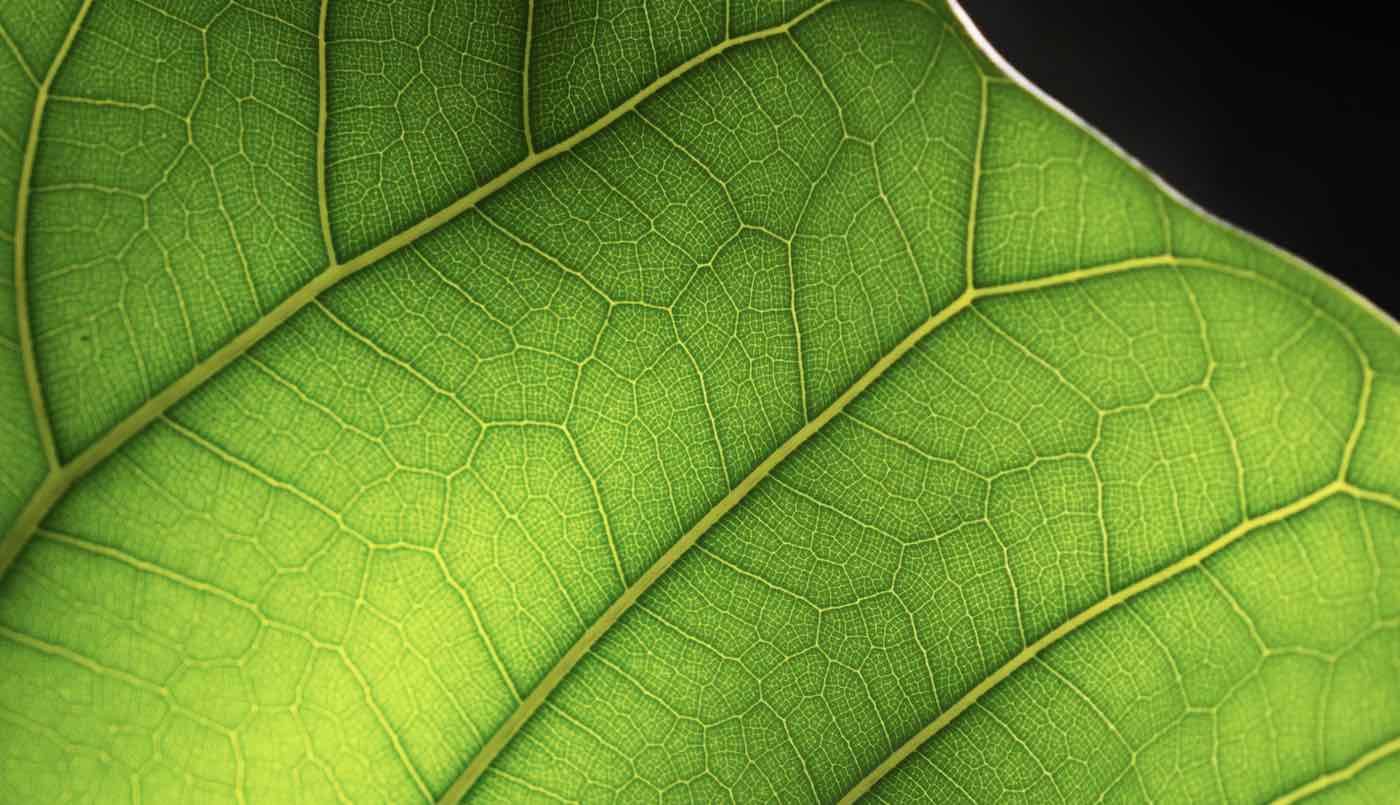New advancements in materials theory derived from the vein structure that occurs naturally in the leaves of plants could lead to significant new innovations in energy storage and other technologies, based on an update to a century-old law by an international team of researchers.
The team’s work, led by researchers with Cambridge Graphene Centre’s NanoEngineering group, is based on Murray’s Law and could lead to the development of new kinds of high-performance sensors, rechargeable batteries, and more.
Murray’s Law holds that when vascular structures, which include the veins within leaves or blood vessels within animals, branch into daughter vessels, the cube of the parent vessel’s radius will equal the sum of the cubes of the radii of each of the daughter vessels. In essence, this dictates the efficient transfer of fluids within an organism while conserving energy.
Although Murray’s Law works well for structures featuring cylindrical pores, the same doesn’t always hold true for synthetic networks where a diversity of other shapes are present, according to Binghan Zhou, a Cambridge PhD student and the lead author of a new paper detailing the findings.
A New Twist on a Century-Old Law
The new theory Zhou and his colleagues have derived from this traditional law, which they call “Universal Murray’s Law, seeks to account for the gap between synthetic materials and biological vessels, enabling artificial material systems to draw similar benefits that could aid in producing more efficient energy and environmental technologies.
“The original Murray’s Law was formulated by minimising the energy consumption to maintain the laminar flow in blood vessels,” Zhou explains, “but it was unsuited for synthetic materials.”
To extend the Law’s application to synthetic materials, Zhou says his team was able to expand it by considering flow resistance in hierarchical channels. “Our proposed Universal Murray’s Law works for the pores of any shape and suits all common transfer types, including laminar flow, diffusion, and ionic migration.”
Transfer processes that involve the passage of ions or mass through extremely porous materials could be greatly improved by the team’s new Law. One example entails how ions move between conductors through porous barriers, such as when they pass between electrodes within a battery when it is either being charged or discharging energy.
Similarly, gas sensors work by diffusing gas molecules through porous materials, and a range of other examples exist in areas involving chemicals and other applications.
Zhou says that Universal Murray’s Law will increase the efficiency of all these applications and many other similar technologies by reducing flow resistance.
Demonstrating the Universal Murray’s Law
To demonstrate the theory’s efficacy, researchers used an extremely porous graphene aerogel and, by controlling the production of ice crystals within the material, were able to adjust the size and shape of the material’s pores.
Dongfang Liang, Professor of Hydrodynamics at Cambridge’s Department of Engineering, explained that the team employed a hierarchical model for numerical simulation “and found that simple shape changes following the proposed Law indeed reduce the flow resistance,” showing that tiny channels appeared to conform to the new Universal Murray’s Law, exhibiting only a small amount of resistance against the flow of fluid, whereas flow resistance increased when deviating from the Law.
The team’s optimizations of a porous gas sensor also demonstrated the potential use of the new Law. The sensors offered clear improvements over traditional sensors, with only minor differences in shape, which Zhou says showcases “the power and ease of application of our proposed Law.”
According to Tawfique Hasan, a professor of nanoengineering at the Cambridge Graphene Centre, the team has now incorporated the Law into applications involving synthetic materials.
Hasan, who led the team’s recent research, says their findings “could be an important step towards theory-guided structural design of functional porous materials.”
“We hope our work will be important for new generation porous materials and contribute to applications for a sustainable future,” Hasan says.
The team’s new paper, “Universal Murray’s law for optimised fluid transport in synthetic structures,” was published in the journal Nature Communications on May 7, 2024.
Micah Hanks is the Editor-in-Chief and Co-Founder of The Debrief. He can be reached by email at micah@thedebrief.org. Follow his work at micahhanks.com and on X: @MicahHanks.

